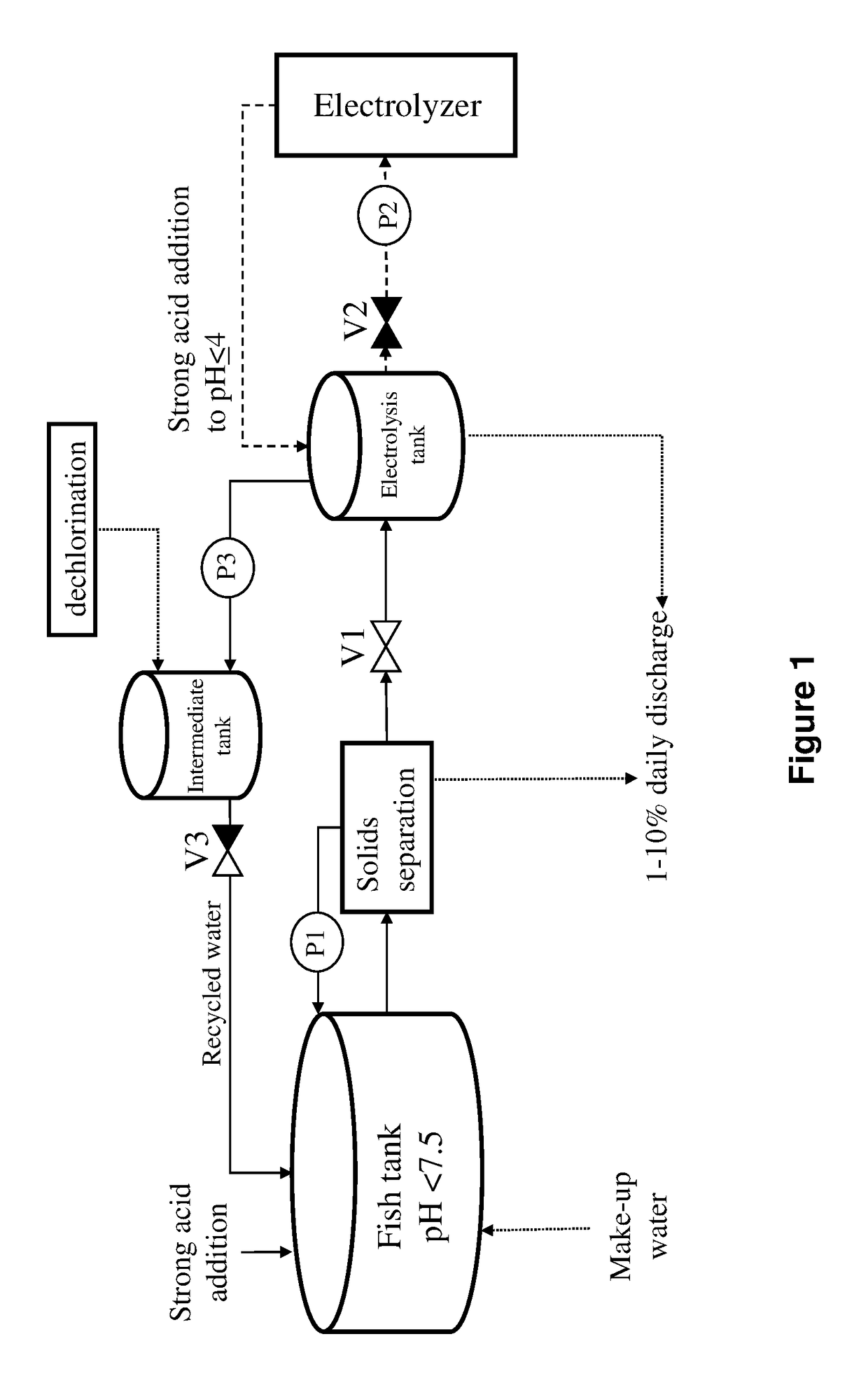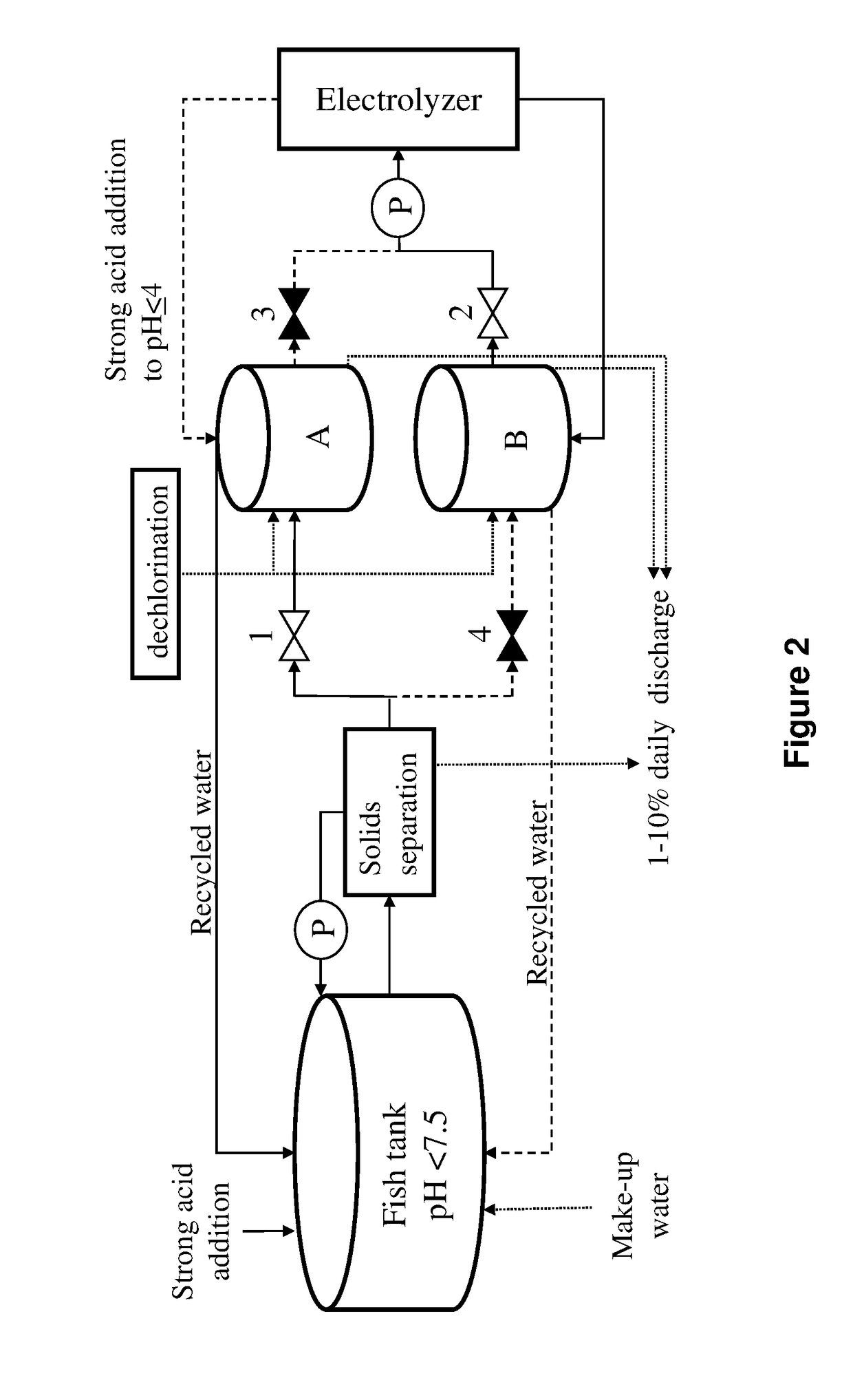Disinfection and removal of nitrogen species from saline aquaculture systems
- Summary
- Abstract
- Description
- Claims
- Application Information
AI Technical Summary
Benefits of technology
Problems solved by technology
Method used
Image
Examples
example 1
[0083]In this representative example demonstrating the process of the present invention, gilthead seabream (sparus aurata), a high quality seawater fish, was grown for 133 days while closely monitoring its growth performance and health condition. Other factors, such as the alkalinity mass balance, electrooxidation efficiency, the CO2(aq) concentration in the fish tank and formation of THM, were also quantified and reported. As demonstrated hereinbelow, the claimed process is very attractive both from the technical feasibility as well as from the cost effectiveness aspect.
1. Materials and Methods
[0084]A pilot scale physical-chemical RAS unit was operated with gilthead seabream for 133 days. The growth period was divided in four: (1) 20 days of adaptation; (2) 75 days of growth at TAN of ˜30 mgN / l (Stage 1); (3) 9 days of adaptation; (4) 29 days at TAN of ˜65 mgN / l (Stage 2). The water available for the operation was groundwater with ˜40% seawater salinity and relative high alkalinity...
example 2
Reduction in Formation of Trihalomethanes (THM) by Maintaining Low pH in Electrolysis Tank
[0124]Typical organic matter was isolated from a commercial RAS. The organic matter was dried and ground to homogenous powder. This powder was added into 20 liter of seawater following pretreatment that consisted of 2 h in acidified (pH 3) seawater and further 24 h at normal seawater pH (pH 8.1). Ammonia was added to the test solution to achieve ˜20 mgN / l. DOC (dissolved organic carbon analysis) was measured before each experiment, to assure constant initial water properties. Electrolysis was applied to this solution (applied current=1 A) at three pH values: 2, 3 and 7 using a Klorogen 10 electrolyzer. The flow rate through the electrolyzer was ˜3 l / min. NaOH was added to the water during the electrolysis using a controller and a dosing pump, to maintain constant pH. THM and TAN were sampled throughout the experiment.
Results
[0125]The DOC measured in the initial water was 24.4±3.5 mgC / l. As can ...
PUM
 Login to View More
Login to View More Abstract
Description
Claims
Application Information
 Login to View More
Login to View More - R&D
- Intellectual Property
- Life Sciences
- Materials
- Tech Scout
- Unparalleled Data Quality
- Higher Quality Content
- 60% Fewer Hallucinations
Browse by: Latest US Patents, China's latest patents, Technical Efficacy Thesaurus, Application Domain, Technology Topic, Popular Technical Reports.
© 2025 PatSnap. All rights reserved.Legal|Privacy policy|Modern Slavery Act Transparency Statement|Sitemap|About US| Contact US: help@patsnap.com



